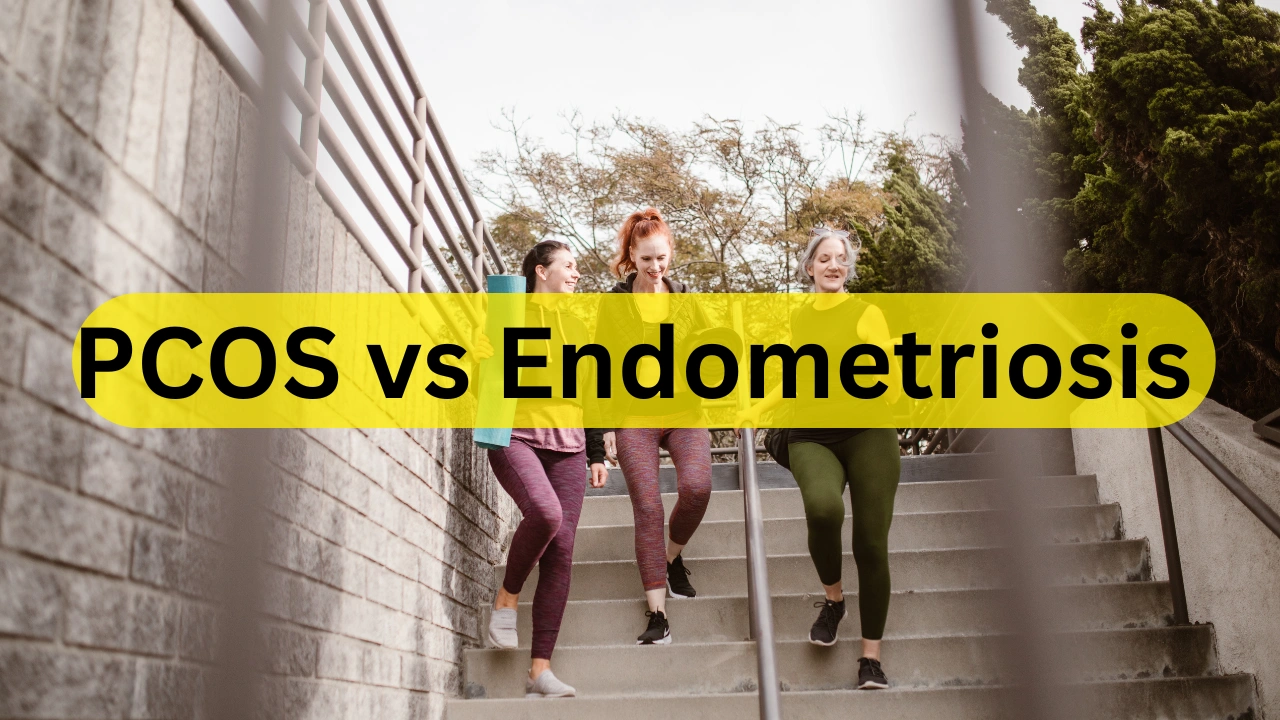Polycystic Ovary Syndrome (PCOS) and Endometriosis are two common conditions that affect women’s reproductive health. While both conditions can cause significant discomfort and have a profound impact on fertility, they are often misunderstood and misdiagnosed.
Understanding the differences between PCOS and Endometriosis is crucial for accurate diagnosis and treatment. This article aims to provide a comprehensive comparison of these two conditions, focusing on their symptoms, causes, and treatment options, helping you make informed decisions about your health.
What is PCOS?
Definition and Overview of PCOS
Polycystic Ovary Syndrome (PCOS) is a hormonal disorder that affects women of reproductive age. It is characterized by irregular periods, excess androgen (male hormones), and the presence of cysts in the ovaries. These cysts are actually immature follicles that have failed to release eggs.
Symptoms of PCOS
Some common symptoms of PCOS include:
- Irregular periods or absence of periods
- Excessive hair growth (hirsutism) on the face, chest, or back
- Acne and oily skin
- Thinning hair on the scalp
- Infertility or difficulty getting pregnant
Causes and Risk Factors
The exact cause of PCOS is still unknown, but it is believed to be influenced by genetic and hormonal factors:
- High levels of androgens (male hormones) interfere with the development of eggs in the ovaries, leading to ovulation problems.
- Insulin resistance can contribute to weight gain and increased androgen production.
- Genetics may play a role, as PCOS often runs in families.

Diagnosis and Testing for PCOS
PCOS is diagnosed through a combination of:
- A physical examination
- Blood tests to check hormone levels
- An ultrasound to check for cysts in the ovaries
What is Endometriosis?
Definition and Overview of Endometriosis
Endometriosis occurs when tissue similar to the lining of the uterus (endometrium) grows outside the uterus, such as on the ovaries, fallopian tubes, or other organs in the pelvis. This condition leads to inflammation, pain, and scarring.
Symptoms of Endometriosis
Common symptoms of Endometriosis include:
- Painful periods (dysmenorrhea) that are often worse than usual
- Chronic pelvic pain and pain during intercourse
- Infertility or difficulty getting pregnant
- Heavy menstrual bleeding or spotting
- Pain with bowel movements or urination, especially during periods
Causes and Risk Factors
The exact cause of Endometriosis remains unclear, but potential contributing factors include:
- Retrograde menstruation, where menstrual blood flows backward through the fallopian tubes into the pelvic cavity instead of leaving the body.
- Genetics, as Endometriosis often runs in families.
- Immune system disorders may also contribute to the growth of endometrial tissue outside the uterus.
Diagnosis and Testing for Endometriosis
Endometriosis is diagnosed through:
- Laparoscopy (a minimally invasive surgery) to view the pelvic organs and identify abnormal growths
- Imaging tests like ultrasound or MRI may be used to detect larger cysts or endometrial implants.
Key Differences Between PCOS and Endometriosis
Symptom Comparison
While both conditions can cause pelvic pain and infertility, the symptoms differ:
- PCOS is often marked by irregular periods, excess hair growth, and acne.
- Endometriosis typically presents with severe menstrual pain, pain during intercourse, and chronic pelvic pain.
Causes and Risk Factors
The main difference between the two lies in their causes:
- PCOS is primarily a hormonal imbalance involving high levels of androgens and insulin resistance.
- Endometriosis is a condition where endometrial-like tissue grows outside the uterus, causing inflammation and pain.
How These Conditions Affect Reproductive Health
Both PCOS and Endometriosis can affect fertility, but in different ways:
- PCOS can prevent regular ovulation, leading to difficulty getting pregnant.
- Endometriosis can cause scar tissue and adhesions around the ovaries, fallopian tubes, and uterus, which can block conception.
Common Treatment Options for PCOS and Endometriosis
Treatment for PCOS
The treatment for PCOS typically focuses on managing symptoms and preventing complications:
- Hormonal birth control to regulate periods and reduce symptoms like acne and excessive hair growth.
- Metformin to help manage insulin resistance and promote weight loss.
- Fertility treatments, such as ovulation induction, if pregnancy is desired.
- Lifestyle changes, including diet and exercise, to manage weight and insulin resistance.
Treatment for Endometriosis
The treatment for Endometriosis focuses on relieving pain and managing symptoms:
- Pain management through NSAIDs (Non-Steroidal Anti-Inflammatory Drugs).
- Hormone therapy (birth control pills, IUDs, GnRH agonists) to reduce or stop the growth of endometrial tissue.
- Laparoscopic surgery to remove endometrial growths or cysts, or in severe cases, to remove affected organs.
Managing Symptoms and Improving Quality of Life
Both conditions require ongoing care, including:
- Dietary changes to manage weight and reduce inflammation.
- Stress reduction techniques, such as yoga or meditation.
- Regular check-ups to monitor fertility and the progression of the condition.
Living with PCOS or Endometriosis: Support and Lifestyle Changes
Coping Strategies for Endometriosis
Living with Endometriosis can be challenging due to chronic pain and emotional stress. Strategies include:
- Pain management techniques like heating pads or acupuncture.
- Counseling or joining a support group to cope with the emotional toll.
Coping Strategies for PCOS
For PCOS, managing symptoms such as irregular cycles and acne may involve:
- Medication to regulate hormones and manage symptoms.
- Dietary and lifestyle changes to improve overall health and reduce symptoms.
- Mental health support, as PCOS can affect mood and self-esteem.
When to See a Doctor
Signs You Should Consult a Doctor for PCOS
If you experience symptoms such as irregular periods, excessive hair growth, or difficulty conceiving, consult a healthcare provider to discuss treatment options.
Signs You Should Consult a Doctor for Endometriosis
If you experience severe menstrual pain, chronic pelvic pain, or difficulty getting pregnant, it’s important to seek medical advice for diagnosis and treatment options.
Conclusion
Understanding the differences between PCOS and Endometriosis is essential for proper diagnosis and effective treatment. Both conditions have significant implications for a woman’s health, particularly regarding fertility and long-term well-being.
| Homepage | uhmychart.org |
Early intervention, proper medical management, and lifestyle adjustments are crucial for improving quality of life and reducing complications.
Frequently Asked Questions (FAQs)
Can you have both PCOS and Endometriosis?
Yes, it’s possible to have both conditions, though they are distinct. In some cases, women with PCOS may also develop Endometriosis, which can complicate diagnosis and treatment.
How are PCOS and Endometriosis related to fertility?
Both PCOS and Endometriosis can affect fertility, but in different ways. PCOS often causes anovulation (lack of ovulation), while Endometriosis can block the reproductive organs and cause scarring.
What is the best treatment option for both conditions?
The best treatment option depends on the individual’s symptoms and goals. Hormonal therapy, lifestyle changes, and fertility treatments are commonly used for both conditions.






